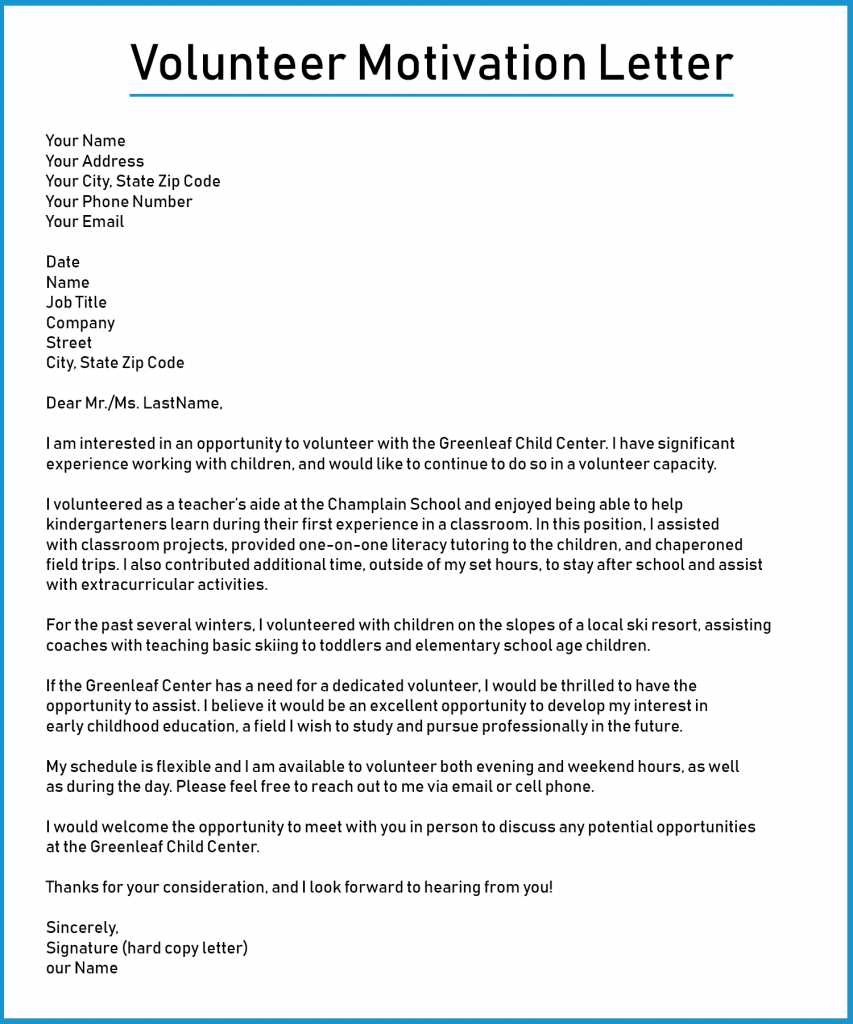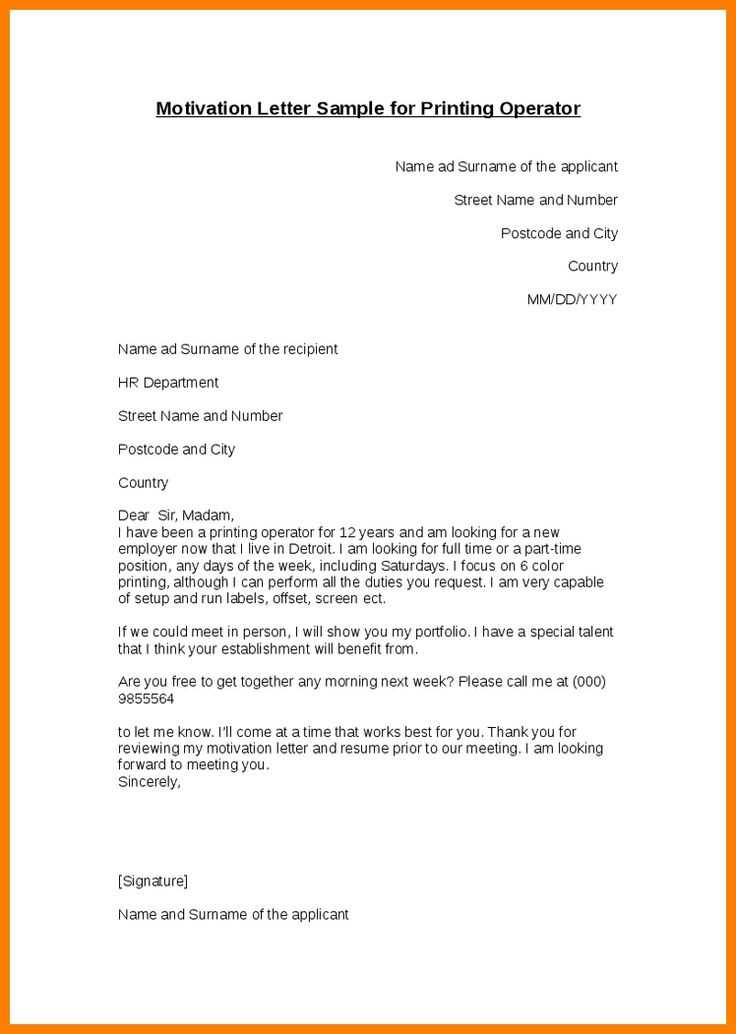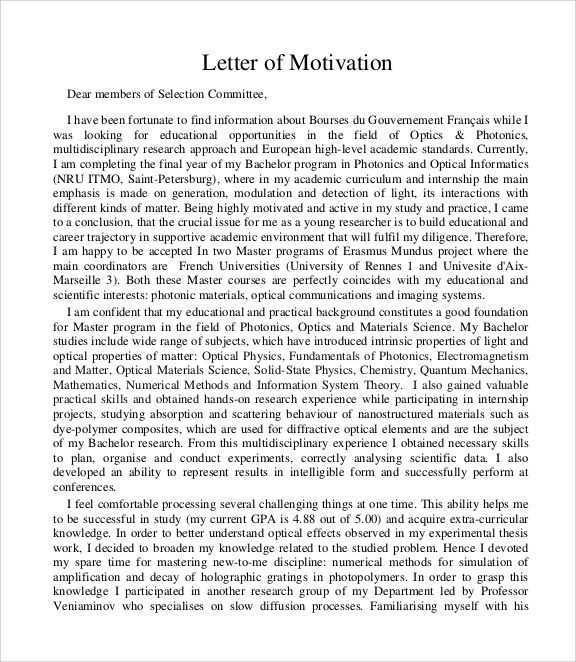Effective Template for Writing a Motivational Letter

When applying for a job, university program, or any other opportunity, presenting your qualifications in the right way can significantly increase your chances of success. One key document that plays a pivotal role in making a lasting impression is the one where you explain your interest, background, and fit for the opportunity. Creating this document from scratch can be daunting, but having a solid structure can simplify the process and help you express yourself effectively.
Essential Structure for a Compelling Application
While each application may require slight modifications based on the position or program, the basic framework remains the same. It’s important to keep the content focused, engaging, and concise. Below are the key components that should be included in your submission.
Introduction: Grab Attention Immediately

Start with a brief introduction that clearly communicates your enthusiasm for the opportunity. Include information about how you discovered the position and why it excites you. Be sure to convey your motivation without sounding generic.
Showcase Your Qualifications and Skills
Next, focus on your relevant skills, experiences, and achievements. Highlight the strengths that make you a valuable candidate. Be specific, but avoid overwhelming the reader with too much detail.
Explain Why You’re a Good Fit
Demonstrate why your background aligns with the organization or program’s needs. Explain how your experiences make you an ideal candidate and how you can contribute to their goals or mission.
Personalizing Your Approach
Each application requires a unique approach tailored to the specific audience. Personalization shows genuine interest and dedication to the opportunity. Here are a few ways to make your submission stand out:
- Research the organization or institution: Learn about their values and culture to align your submission with their mission.
- Address the recipient by name: Whenever possible, personalize the greeting to make your message feel more direct and thoughtful.
- Highlight shared values: Emphasize common goals or beliefs between you and the organization to strengthen your case.
Avoid Common Pitfalls

When writing your submission, be cautious of these common mistakes:
- Overuse of generic phrases: Keep the language specific and genuine to stand out.
- Being too vague: Avoid broad statements; always provide concrete examples of your qualifications.
- Neglecting formatting: Ensure that your document is clear, professional, and easy to read.
By following these guidelines, you’ll be able to create an application that captures the attention of the reader and showcases your strengths effectively.
Why You Need a Persuasive Document Structure
When applying for a job or program, a well-structured submission is crucial to communicate your qualifications and enthusiasm effectively. A strong document can make the difference between getting noticed and being overlooked. Using a proven outline will help ensure that you convey your intentions clearly and make a compelling case for your candidacy. This section will guide you through the essential elements of a powerful submission and how to adapt it to your specific needs.
Key Elements of a Strong Application
The foundation of any effective application includes a few key sections: an engaging introduction, a well-defined argument of why you’re a great fit, and a conclusion that reinforces your enthusiasm. Each part should flow logically into the next, creating a cohesive and convincing message. Highlight your skills, experiences, and why you’re interested in the position to showcase your value to the reader.
How to Personalize Your Submission
To make your application stand out, personalize it by adjusting the content to reflect the specific requirements of the role or program. Tailor the tone, examples, and structure to match the organization’s values and needs. Doing so will demonstrate that you’ve researched the opportunity and are genuinely interested in what they offer.
Remember, it’s essential to customize your application to each opportunity. One-size-fits-all approaches often feel impersonal and can fail to capture the attention of the reader.
Avoid Common Mistakes

While crafting your submission, be mindful of typical errors, such as using overly generic language, providing irrelevant details, or neglecting to proofread. These mistakes can detract from your message and leave a negative impression. Always ensure that your document is polished, precise, and free from errors to maintain professionalism.
By keeping these principles in mind, you can create an application that not only meets the requirements but also highlights your unique qualifications in the best possible light.